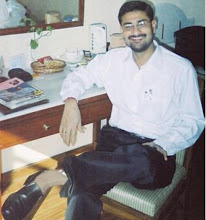Recent pictures taken by Google Earth via satellite have confirmed the worst fears of environmentalists. An eight-km stretch of the Bhagirathi river has dried up. The river is shown snaking through the Himalayan mountains as one long, sandy stretch minus any water. Other rivers emanating from the Gangotri glacier, including the Bhilangana, the Assi Ganga and the Alaknanda, all tributaries of the Ganga river, are also drying up. This same dry stretch of the Bhagirathi in 2004, according to Google Earth pictures generated at that time, was one-km-long.Commodore Sureshwar Sinha, chairperson of the NGO Paani Morcha, has been fighting to save the Ganga for the last 16 years. Mr Sinha showed these pictures to a startled Chief Justice of India K.G. Balakrishnan and his three-member bench with Justice R.V. Raveendran and Justice M.K. Sarma earlier this month.Mr Sinha had filed a PIL in the Supreme Court in 1992 highlighting how Ganga water had turned brackish in the city of Kanpur and had also lost its natural flow."When the Tehri dam was being built over a decade ago, we had warned that it would bring about a demise of all the major rivers emanating from the Gangotri glacier. Bhagirathi is the largest of the tributaries of the Ganga. If this can dry up, imagine the fate of the smaller rivers," he said. Mr Sinha had recently filed an additional affidavit to his original petition, pointing how the construction of four massive dams and hydro projects on Bhagirathi upstream of Uttarkashi was responsible for its drying up. The four dams under construction are the Maneri-Bahli, Bhairon Ghate, Lohari Nagpala and the Pala Maneri. The petition highlights how during the lean season, the flow of the Bhagirathi has come down from 40 cubic metres per second to half-a-cubic metre per second. The Assi Ganga’s flow is down to 10 cubic metres per second. These projects are the key reason for these declining flows because these have been undertaken without conducting the porosity test. "The Himalayas consist of sedimentary rock structure which has a high percolation rate of water. Dams obstruct the flow of water and so the water has been percolating through these rocks and the dams are drying up. The NTPC seems to have undertaken these projects without undertaking a basic porosity test," he says.Activist Vandana Shiva feels the problem has been compounded because most of the data on which the engineers have worked is outdated. "Data collected 50 years ago can hardly be considered valid today. The result is that the Tehri dam, which was supposed to generate 1000 megawatts of power, is generating only 100 megawatts according to the engineers working there," she said.Tehri engineers counter this by stating that during the lean season, rivers have less water. Global warming is also responsible for the Gangotri glacier retreating every year.Mr Sinha’s petition says that the Tehri dam engineers would have sidestepped this issue if they had conducted porosity tests. "Two projects coming up at Ponta Sahib and Dehra Dun were cancelled due to high percolation rates. When a carrot of Rs 14,000 crores, which is the World Bank funding for these projects, is dangled before the dam lobbies, obviously they will succumb," Mr Sinha says. His application states that the Tehri is facing imminent threat of closure because of the reduced flow of the Bhagirathi river. The Tehri dam is situated at the confluence of the Bhagirathi and the Bhilangana.UP chief engineer (Ganga) Harishankar Sharma confirms Mr Sinha’s thesis and insists that supply to the Upper Ganga canal is on the decline as they are receiving less water from Tehri.Mr Sharma said, "There is no availability of water from Deoprayag. The entire water supply system which is based on the Ganga canal has collapsed."Officials of Tehri Hydro Development Project (THDC) insist that water activists are taking an unduely alarmist position since there is always a reduction of supply during lean season. Mr A.L. Shah, GM (project), THDC, maintains, "The quantum of water we are releasing from the dam is more than what we are getting from the Bhagirathi river. It is up to UP to decide how much water they want to release to Delhi. We don’t have any control over it."Mr Sinha has suggested immediate measures by constituting a high-powered committee to work out urgent steps before monsoon.
Source: Howrah.Org
By RASHME SEHGAL
Posted by SAN at 7:32 AM
Uttarakhand News
About Me

- Kamal Kumar Pandey (Adv. Supreme Court of India)
- Lawyer Practising at Supreme Court of India. Court Experience: Criminal, Civil & PIL (related to Property, Tax, Custom & Duties, MVAC, insurance, I.P.R., Copyrights & Trademarks, Partnerships, Labour Disputes, etc.) Socio-Legal: Child Rights, Mid Day Meal Programme, Sarva Shiksha Abhiyaan, Women Rights, Against Female Foeticide, P.R.Is, Bonded Labour, Child labour, Child marriage, Domestic violence, Legal Literacy, HIV/AIDS, etc. Worked for Legal Aid/Advise/Awareness/Training/Empowerment/Interventions/Training & Sensitisation.
Contact Me
+91 9971049936, +91 9312079439
Email: adv.kamal.kr.pandey@gmail.com
Email: adv.kamal.kr.pandey@gmail.com

No comments:
Post a Comment
Comment